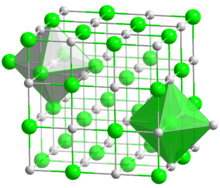
| |
| Identifiers | |
|---|---|
3D model (JSmol)
|
|
| ChEBI | |
| ChemSpider | |
| ECHA InfoCard | 100.040.180 |
| EC Number |
|
| 13627 | |
PubChem CID
|
|
| UNII | |
CompTox Dashboard (EPA)
|
|
| |
| |
| Properties | |
| BaS | |
| Molar mass | 169.39 g/mol |
| Appearance | white solid |
| Density | 4.25 g/cm3 [1] |
| Melting point | 2,235[2] °C (4,055 °F; 2,508 K) |
| Boiling point | decomposes |
| 2.88 g/100 mL (0 °C) 7.68 g/100 mL (20 °C) 60.3 g/100 mL (100 °C) (reacts) | |
| Solubility | insoluble in alcohol |
Refractive index (nD)
|
2.155 |
| Structure | |
| Halite (cubic), cF8 | |
| Fm3m, No. 225 | |
| Octahedral (Ba2+); octahedral (S2−) | |
| Hazards | |
| GHS labelling: | |
 
| |
| Warning | |
| H315, H319, H335, H400 | |
| P261, P264, P271, P273, P280, P302+P352, P304+P340, P305+P351+P338, P312, P321, P332+P313, P337+P313, P362, P391, P403+P233, P405, P501 | |
| NFPA 704 (fire diamond) | |
| Lethal dose or concentration (LD, LC): | |
LD50 (median dose)
|
226 mg/kg humans |
| Related compounds | |
Other anions
|
Barium oxide Barium selenide Barium telluride Barium polonide |
Other cations
|
Beryllium sulfide Magnesium sulfide Calcium sulfide Strontium sulfide Radium sulfide |
Except where otherwise noted, data are given for materials in their standard state (at 25 °C [77 °F], 100 kPa).
| |
Barium sulfide is the inorganic compound with the formula BaS. BaS is the barium compound produced on the largest scale.[3] It is an important precursor to other barium compounds including BaCO3 and the pigment lithopone, ZnS/BaSO4.[4] Like other chalcogenides of the alkaline earth metals, BaS is a short wavelength emitter for electronic displays.[5] It is colorless, although like many sulfides, it is commonly obtained in impure colored forms.
- ^ Lide, David R., ed. (2006). CRC Handbook of Chemistry and Physics (87th ed.). Boca Raton, FL: CRC Press. ISBN 0-8493-0487-3.
- ^ Stinn, C., Nose, K., Okabe, T. et al. Metall and Materi Trans B (2017) 48: 2922. https://doi.org/10.1007/s11663-017-1107-5 Archived 2024-01-01 at the Wayback Machine
- ^ Greenwood, Norman N.; Earnshaw, Alan (1997). Chemistry of the Elements (2nd ed.). Butterworth-Heinemann. ISBN 978-0-08-037941-8.
- ^ Holleman, A. F.; Wiberg, E. "Inorganic Chemistry" Academic Press: San Diego, 2001. ISBN 0-12-352651-5.
- ^ Vij, D. R.; Singh, N. (1992). Optical and electrical properties of II-VI wide gap semiconducting barium sulfide. Conf. Phys. Technol. Semicond. Devices Integr. Circuits, 1992. Proceedings of SPIE. Vol. 1523. pp. 608–612. Bibcode:1992SPIE.1523..608V. doi:10.1117/12.634082.
